Sunset, Friday, 29 January 2010
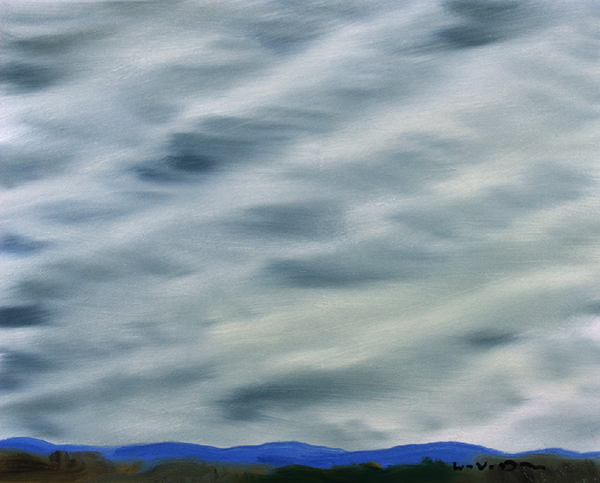 William Theodore Van Doren. Sunset from Stony Point, Albemarle County, Va. Oil on watercolor block, 16 x 20.
William Theodore Van Doren. Sunset from Stony Point, Albemarle County, Va. Oil on watercolor block, 16 x 20.
Perhaps a little snow in the offing.
This was one of those days when water freezes in the ground and makes magic little ice caverns, or castles, underfoot – dense combs of gleaming, finely striated vertical ice crystals, just an inch or two tall, pushing up the red mud.
When I was a kid and encountered these on the walk to school, they seemed amazing. There was that sense of having discovered something new – I mean, really new – had anyone ever seen such a thing? After all, no one had ever said to me, “Listen, someday you’re going to run into these magic ice crystals in the mud – don’t get too excited, we already know about them.”
Quite a few things appeared that way – enormous roots bulging out of a creek bank might have been the most spectacular sight of its kind, for all I knew – and had anyone else ever been to this spot in the woods ... in all of human history? My brother Steve and I would find things like that and, like all great explorers, give them names. An abandoned gravel pit far off in the woods – I’m not sure how we managed to consider an abandoned pit something new, exciting and exclusively ours, but that was Frying Pan Canyon. An arena custom-made for throwing rocks.
Even something new only in the sense that it happened to be in a transient state or condition could feel like a discovery. If a bit of swamp froze over enough to allow a rare game of ice hockey – slapping a pine knot around with broken branches – that day of a frozen swamp qualified as something like an unprecedented and perhaps unrepeatable miracle.
Today by the Rivanna, after this week’s floods, Flint and I walked through large areas of woods that had been under water. Along the banks everything was covered in a heavy layer of silt (marbled with what looked like black sand – topsoil?) and small trees nearest the river were plastered all over their skinny branches with papier-mâché handfuls of leaves, twigs and mud. Flint was excited by the fresh stratum of earth; to a scent hound, it seems when there’s any new covering on the ground – snow, or in this case silt – it’s not so much that a place has changed in one aspect, the geography of scent is so different it’s an entirely new place.
Finding all the changes wrought by the flood, and being the first and perhaps only one to see them, at least here, was like the first time seeing ice in the mud. To be discovering things is very fine.
 Friday, January 29, 2010 at 09:16PM | by
Friday, January 29, 2010 at 09:16PM | by  BVD | in
BVD | in  Sunset Paintings | tagged
Sunset Paintings | tagged  Blue Ridge,
Blue Ridge,  Flint the foxhound,
Flint the foxhound,  Rivanna River,
Rivanna River,  Stephen Van Doren,
Stephen Van Doren,  childhood,
childhood,  ice | | Comments Off
ice | | Comments Off 
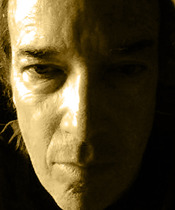
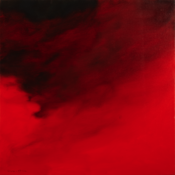
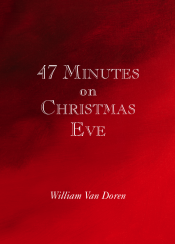
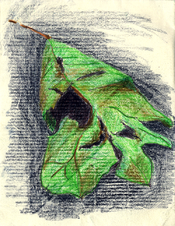

Solstice and Sunset
To all who have been visiting over the past 24 hours from around the world to check out the 21 June sunset – presumably because of an interest in the solstice – well – to quote a popular song from 1950 –
If I Knew You Were Comin’ I’d’ve Baked A Cake ...
Seriously, and truly, I think the solstice has so much personal significance for me, I forgot to note the universal significance. It may be a bit late for me to consider it now, but I’ve been thinking about it quite a bit today.
As to the personal significance, among other things, I should probably explain that my wife Laura and I had our first date on the winter solstice, became engaged on the following winter solstice, and were married at the summer solstice – and the 21st and the number 21 have resonated with us, sometimes in ways that are just about unbelievable. For my part, I’m such a solstice (and equinox) watcher, I take it all somewhat for granted – it’s in the foreground. For example, I deliberately began this sunset series – the practice of painting them every single day – at the autumn equinox, 22 September 1997.
(To digress further – which is what I do best – when I was producing The Wall Paper in Los Angeles, and had to set up a regular schedule of publication in order to qualify for certain periodicals mailing rates, I wanted to publish on each full moon. However, perhaps not surprisingly, I discovered that the United States Postal Service does not care about the phases of the moon.)
So, I was thinking of what I could say to everyone about the solstice other than, “Hey, we went out to celebrate our anniversary.”
I started thinking about being a kid in Virginia, and the way I remember sometimes feeling around midsummer. These feelings are hardly an unalloyed celebration of the solstice.
It’s a largely visual memory, or a complex of implicit, unspoken feelings and ideas embodied in one moment’s very simple and singular image. The image is looking straight up from the ground in our back yard – a half-dirt, half-grass jumble – to the very top of the blue sky. In a sense, that’s all it is: blue sky.
My view sights along a very straight, very tall (60 feet or more), triple-trunked yellow poplar that stood right behind the little house near the propane tank and the broken flagstone of an unfinished patio. Above, beyond the tree – and the radio is playing “Beyond The Sea” (Bobby Darin) or perhaps Domenico Modugno’s “Nel Blu Dipinto Di Blu” – the bluest, clearest, deepest, and, somehow, hottest sky of midsummer seems to go on forever, literally in time as well as space. It’s the height of summer, and never-ending.
To a kid, that endlessness is not necessarily a completely comfortable and happy feeling. It may seem, for example, a little too hot. (It was.) Or there are too many gnats. (There were.) There also may be parents in the yard and you may feel, as children sometimes will, that you’ve crash-landed on a planet that is not altogether capable of supporting life. At the same time, the world is so amazing, and it’s presenting itself to you in all its amazingness in one image, yet it can’t be contained in that image, so the image is overflowing.
(Painting may be a search for the balance of elements that will produce that kind of overflowing image.)
Anyway, the solstice. This kid – me – or the rhetorical ‘you’ – in that moment of seeing the full height of summer, the vastness of the world, you may fear that the things you sense that are unhappy will weigh down on you forever, will never go away, while the fantastic perfection you’ve just glimpsed, the essence of summer, may never come true, may exist only for this moment, and only far away, at the top of the sky. But you seal it in your mind, in your heart, and know you’ll never let it go.
What I find so interesting and beautiful about the symbolic power of the solstice, of midsummer, and of midsummer night, is that the solstice is literally only one instant, a moment, the summit, one little tiny point, and yet it stands for everything, expresses all that is timeless, finds endless summer at summer’s height. I somehow think the human conception of solstice is a great act of faith and of imagination, and I love it, to put it simply. I think I could live there.
In a somewhat similar vein, painting the sunset every day is a recognition of time, but to me, ultimately, the observance of each day seems to break through time.
If you came here for the solstice, I hope I haven’t missed you, and I hope you’ll look around. I can say truthfully, in the words of the song: